The room was opened to visitors to the TCM in December 2008, although with the snow birds and holiday grandchildren the museum was too busy to host an 'official' grand opening party until April of 2009. The exhibit has changed a bit over time but is essentially as we built and donated it. The greatest changes have been the addition of a hand cranked 'section car' along one wall, some plastic train shaped activity toys along another wall and some modifications to the crawl through steam locomotive.
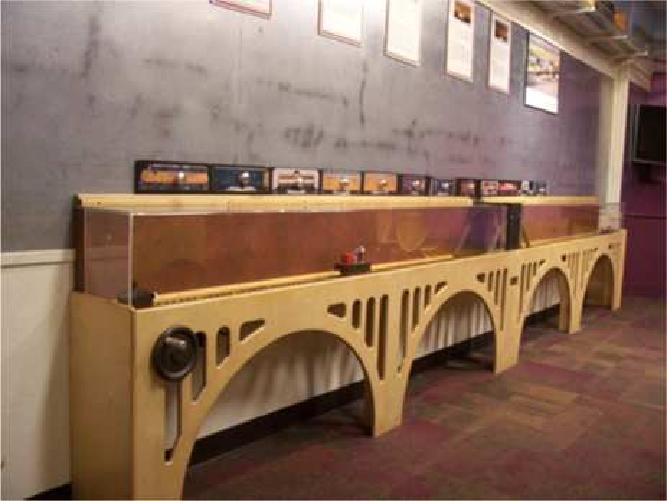
A long case with a hand crank was, at one time, part of TEP's electricity exhibit. At that time the case contained a streetcar and by cranking fast enough the exhibit gene-rated enough electricity to move the streetcar. Unfortun-ately it required so much electricity the kids didn't have the strength to move the car. TCM substituted the hand car which moves at lower voltage and moved the entire exhibit to the train room. Just above the section car case are the magnetic train blocks which we built and donated. In the photo they look as though they are sitting on the top of the section car but are actually held above, by magnets, to the metal wall.
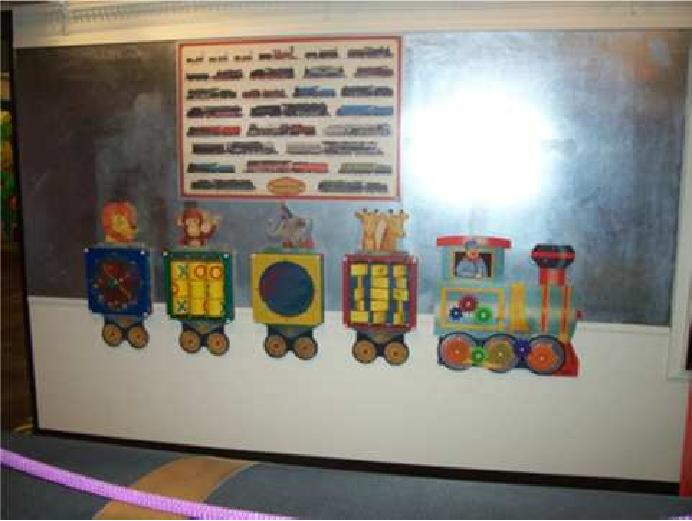
I don't remember if we came up with the kid's activity train or if TCM found these games which are now mounted on the opposite wall. The crawl through locomotive is still very popular with the kids and has been modified by the TCM staff. Though our locomotive bell was authentic, the sound was too loud for the museum. After several trial and error 'fixes' the TCM staff removed the clapper and fixed the bell in place. A rope with plastic hose runs under the bell and now extends from the smokestack through into the cab. When pulled the rope lifts the hose enough to softly strike the bell delighting the kids without driving the staff batty. A more serious problem was that the kids kept stepping on the locomotive wheels to climb on the 'boiler'. After several falls, with no injuries, TCM removed our wood wheels and replaced them with soft rubber ones which bend if the kids try to step on them.
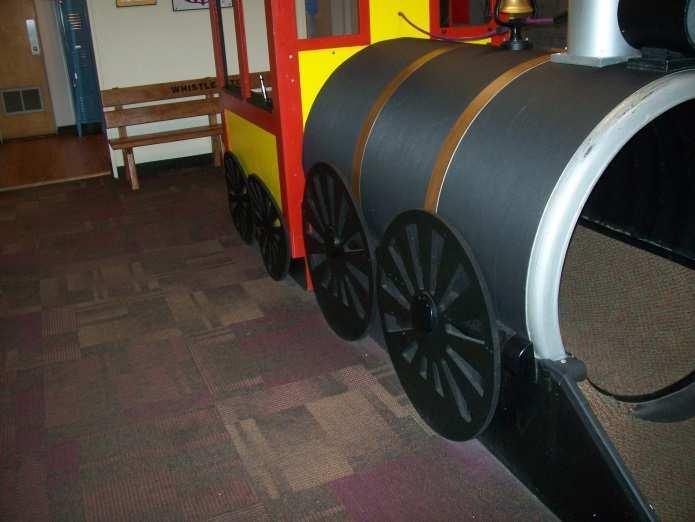
The staff has also fixed plastic at points where the carpet on the pilot tended to pull loose or show wear.
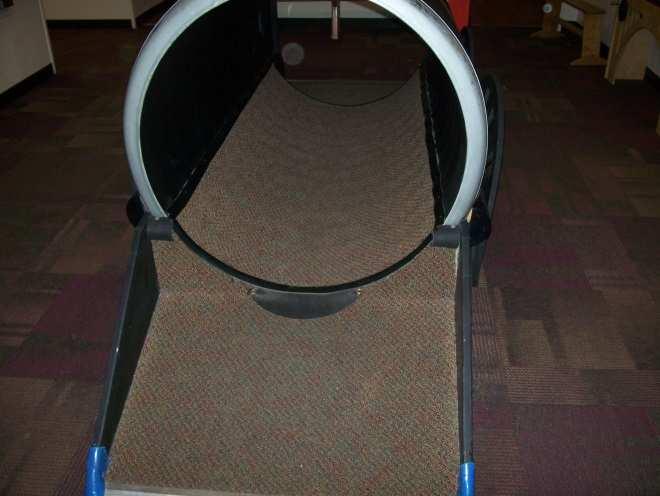
In addition the staff added a hand hold, some push button 'controls' and a throttle lever inside the cab for the kids to play with.
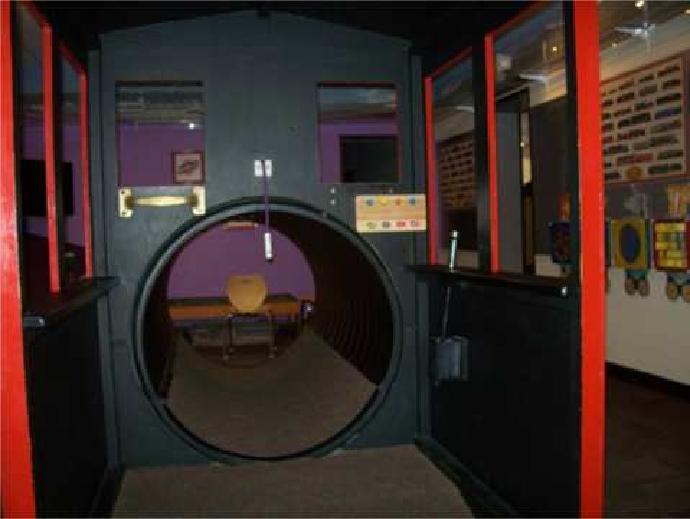
Of course the main attraction is the elevated G scale train which operates on a push button. When the button is pushed the train slowly accelerates, dives through a wall faced with mountains, completes a circuit of the entire room and gradually slows to a halt. The engineer's eye view is captured by a miniature TV camera in the locomotive and transmitted to a large flat screen television mounted in the corner of the train room.
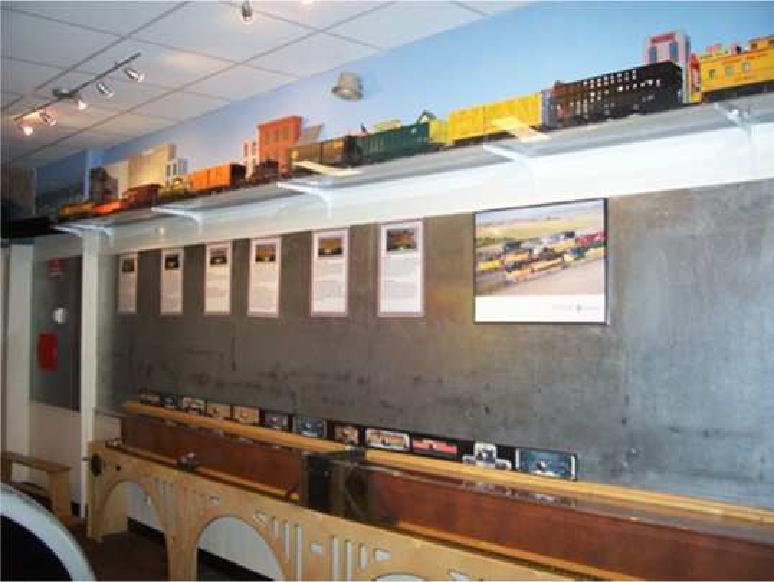
I am pleased to report that Gary Martin's mountains, the momentum circuit designed and built by Glenn Mitchell, the commercial scenic backdrop we applied and the many building flats built by various club members are all functioning and as impressive as they were when first installed five years ago. That doesn't mean that we haven't had our share of problems. The trucks on the Aristocraft RS-3 diesel road switcher had to be rebuilt which Gary Martin and Nick Buchholz handled. We have purchased a second locomotive which is at TCM for emergency backup purposes. This may be an especially good move with Aristocraft going out of business. The inexpensive power supply we had been using lost half of its output but Glenn Mitchell found a replacement which is still functioning after several years of almost constant usage. We had problems with the television reception as the train ran through the wall with the mountains (which contains steel beams) but Nick Buchholz found that elevating the receiving module to track level solved the problem. The biggest issue over the five years has been getting the TCM staff to learn how to clean the track so the train has good contact. Over the years there has been staff turnover and institutional memory rarely passes when this happens.
So after five years our train room looks good and is running fine. The staff tell us it is one of the most popular exhibits and that the train is pretty much in constant use. If you have grandchildren coming to visit, take them down and let them see what our club built. It's pretty certain that they will enjoy it.